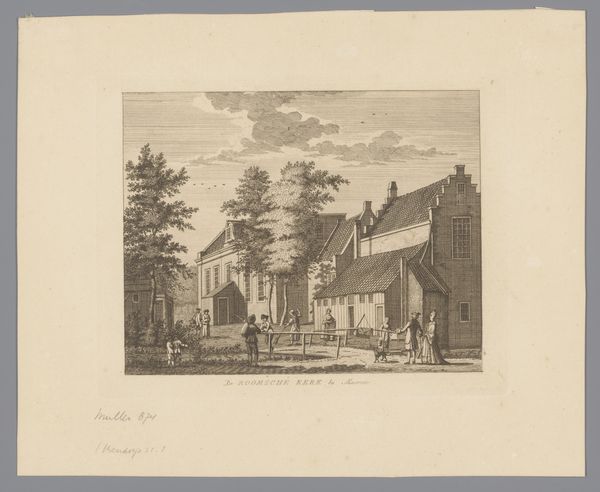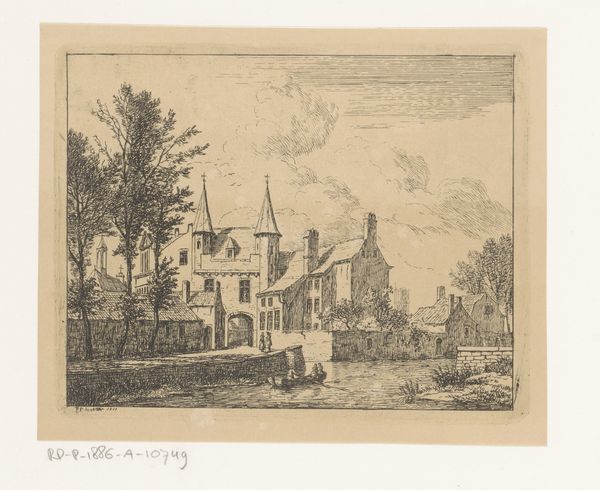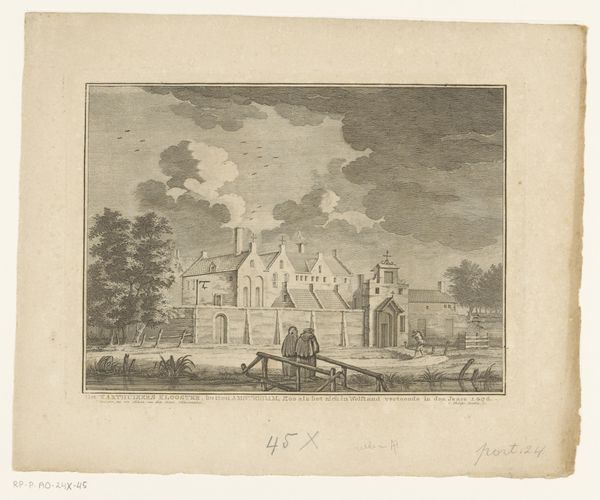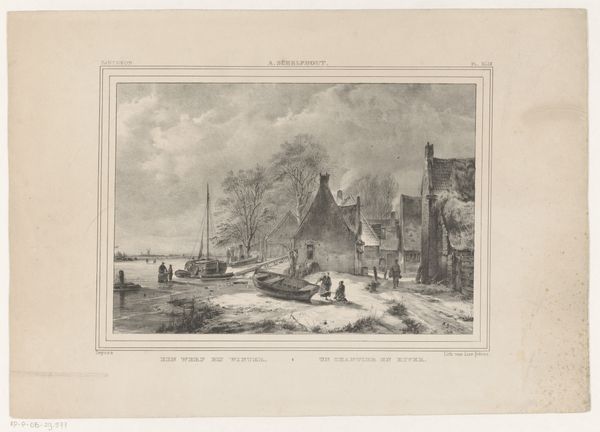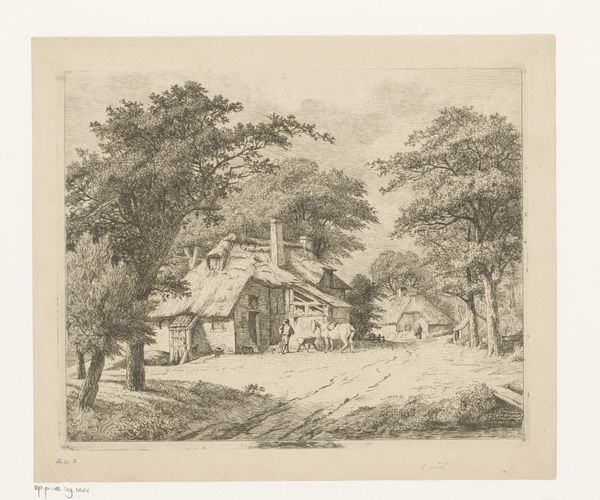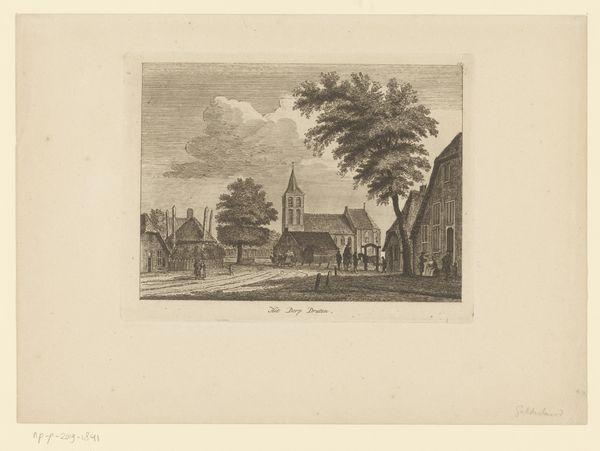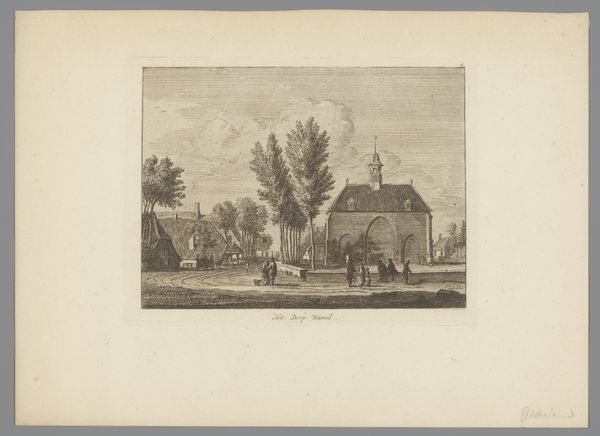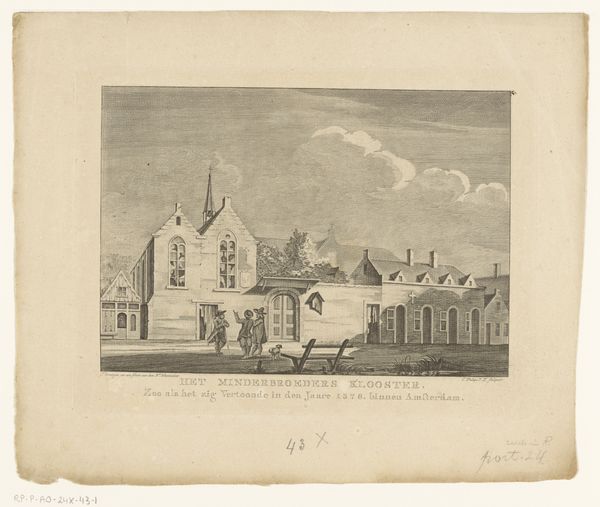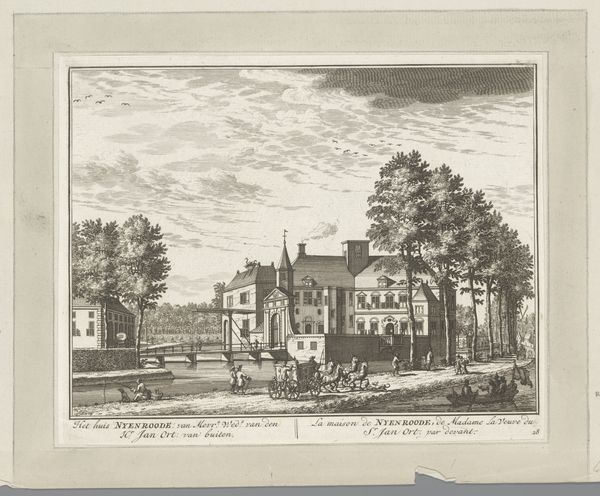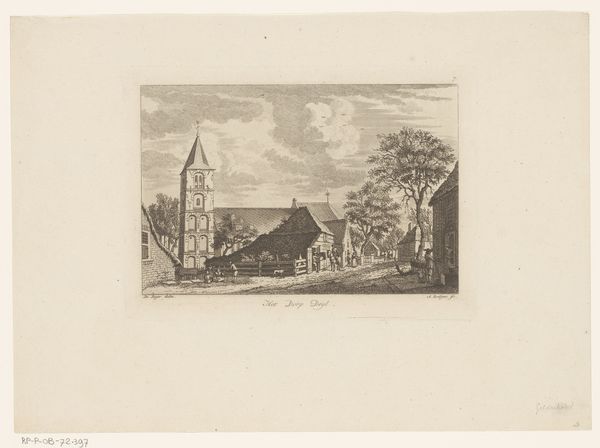
Dimensions: height 168 mm, width 223 mm
Copyright: Rijks Museum: Open Domain
Curator: I'm immediately drawn to the almost melancholic stillness of this etching. It's all in monochrome, which lends a sort of dreamlike quality, like a memory half-faded, half-recalled. What do you make of it? Editor: Well, what we’re looking at here is an etching titled *Het Reguliersklooster buiten Amsterdam, 1502*—although, it’s important to note it was created by Caspar Jacobsz Philips much later, sometime between 1752 and 1789. It depicts the Reguliersklooster, or Reguliers Monastery, located outside Amsterdam. So it is a depiction of a historic religious place. Curator: So, it's a recreation. Knowing that definitely shifts my perspective. I was buying into the whole "ancient scene" vibe it has! But this is an 18th-century artist's imagining of 1502. How fascinating. The crisp lines, the meticulous rendering of textures... they almost seem to want to fix a version of the past, and hold on to the place when everything changes. Editor: Precisely. The Dutch Golden Age and even the subsequent century were periods of significant transformation for Amsterdam. Prints like these served as visual records, circulating ideas about history, community, and urban identity, showing architectural or cityscape evolutions and how this can reshape civic understanding of that period and its urbanity. Curator: I see the strategic purpose of these prints at this time period, and the etching style of this cityscape also softens and romanticizes this monastery... Now that you mention it, the way the light hits the building is pretty idealized too. It's not just a documentary representation but a poetic re-telling, isn't it? I notice it in its clouds. Editor: I agree. While seemingly straightforward, it engages in a kind of nostalgic framing. Curator: Looking at it with that lens, I think there are stories about its composition, its style of etching that offers the perspective about its historic preservation to audiences during that period. I never thought about this. Editor: Exactly, and that's the enduring power of images – prompting us to delve deeper, question our perceptions, and unravel layers of meaning. Curator: Thank you for showing its connection within Dutch history.
Comments
No comments
Be the first to comment and join the conversation on the ultimate creative platform.
